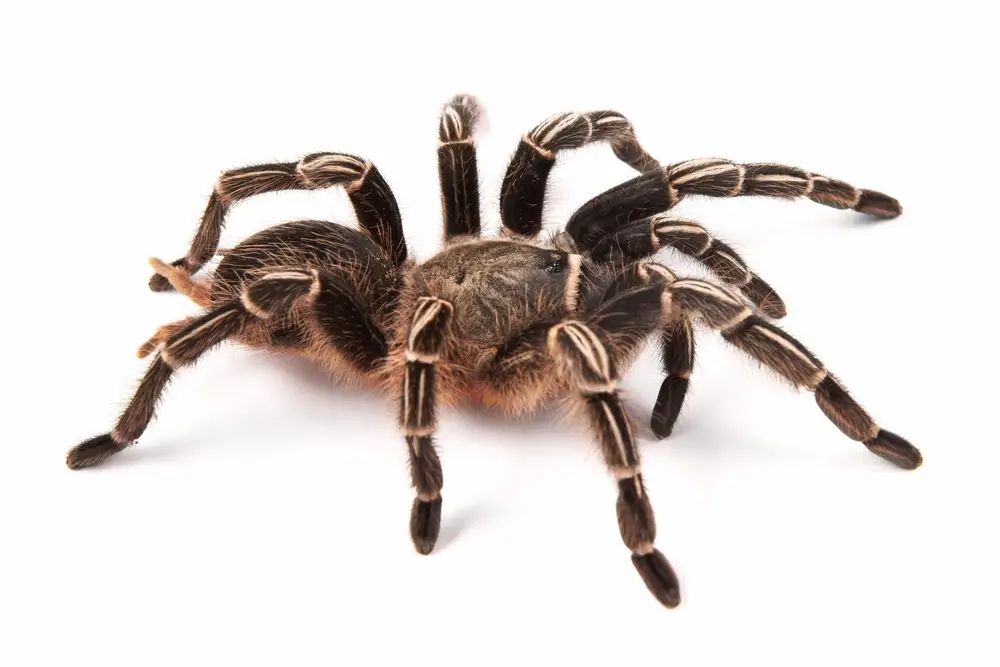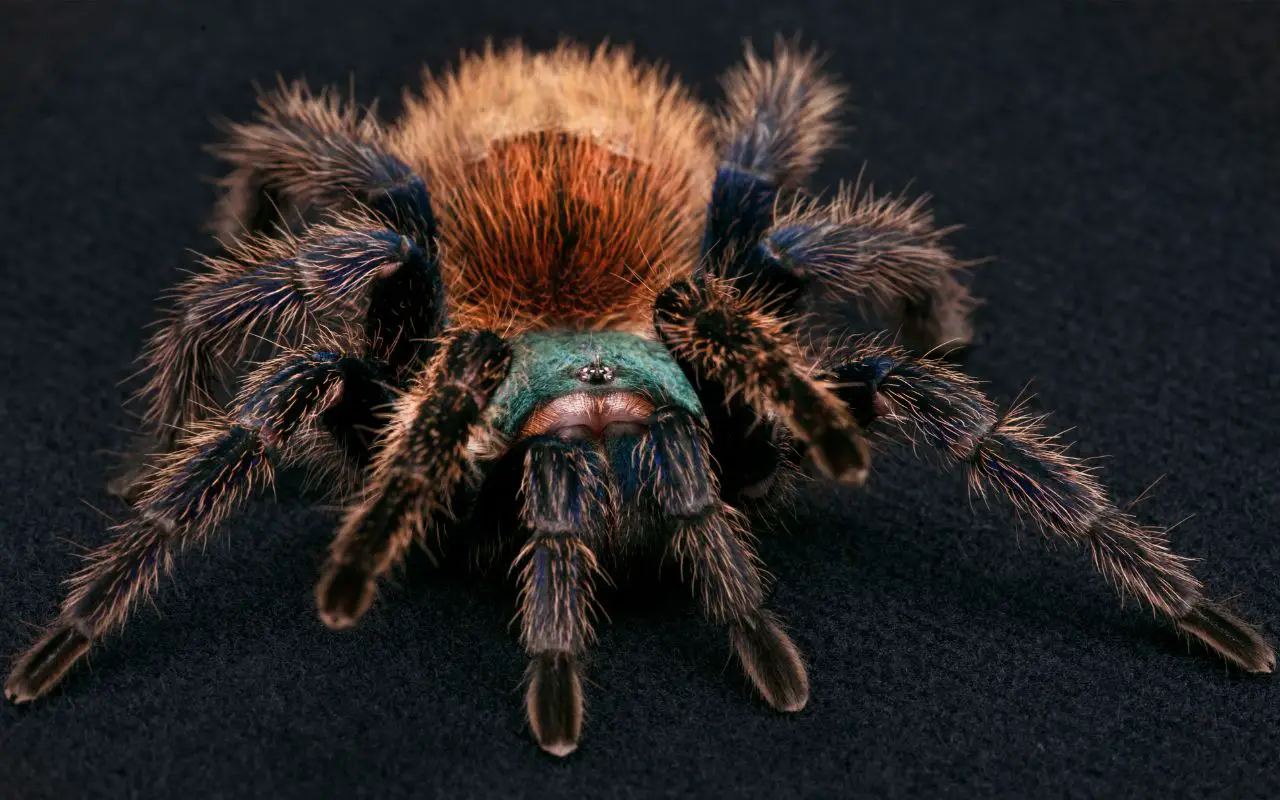In this post, I’m going to tell you all about Costa Rican Zebra (Aphonopelma seemanni) Care. This is a hugely popular tarantula, being both hardy and pretty…
The Costa Rican Zebra, also known as the Aphonopelma seemanni, is a terrestrial New World species common in tropical and humid environments. They are common in Central America, including Costa Rica. You find them in dry to semi-arid scrubland, where they burrow to escape the heat. The female matures at around five to six years and can live up to 20 years.
Housing
Housing a Tarantula spider is easy since it is adapted to a wide range of habitats. All you need is minor variations in its natural habitat if you want to put this species under captive care.
Since it is an active burrower, it would be best to put it in a housing with a thick substrate to make it easy to burrow. Glass terrariums are a viable choice for housing cage since it gives adequate space for the spider to remain active.
It contains a lockable front door and a ventilated lid. The ventilated lid is essential for air circulation while the front door makes feeding and cleaning easier. However, sometimes you may need to provide burrowing space with glass terrariums.
In addition, the housing size depends on the size of the stripped-knee zebra tarantula. A young one can thrive in a smaller terrarium while an adult requires up to about 6 inches of tunneling depth.
Where is the Seemanni Natural Habitat?
Seemanni thrives best in the warm climate of Costa Rica. According to research, there are more specimens originating from Guanacaste, which is hotter and drier than other parts of the country.
The species prefers natural habitats with high humidity of about 70 to 80% in the ground, but low humidity in the air. These habitats have day time temperature up to approximately 30 degrees Celsius.
Areas with scarce populations and those with limited agricultural activities make the most ideal Seemanni natural habitats. Generally, they prefer climates with high temperatures during the day and chilly nights.
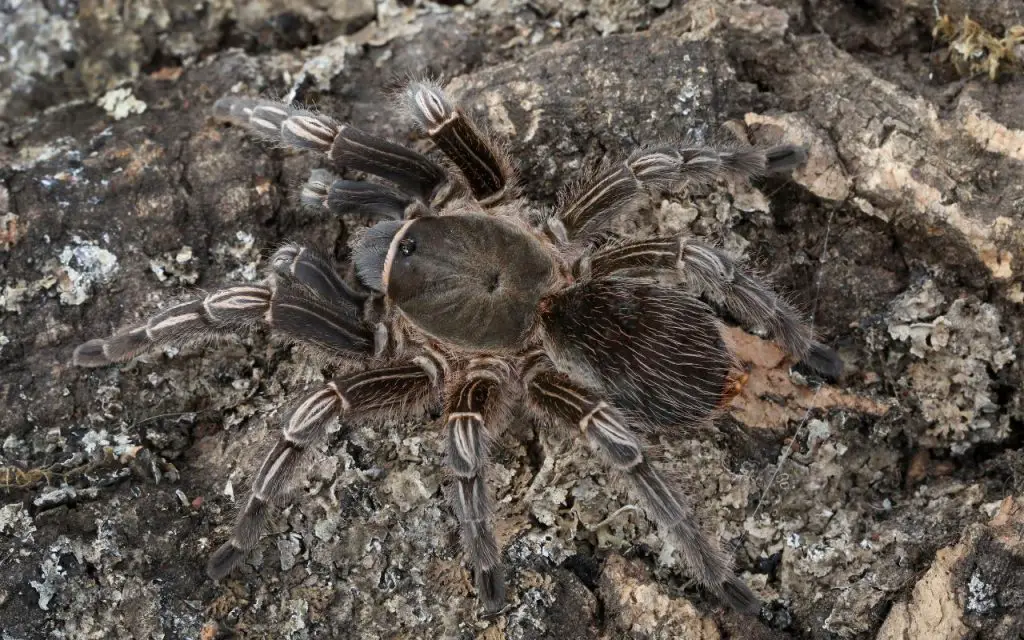
Substrate
Costa Rican Zebra is a deep burrower, meaning it will require a deep substrate to accommodate it underground. If you are keeping this spider species as a pet, it is advisable to use an excellent mix of vermiculite, soil, and peat moss for the substrate. You must make the substrate at least 4 inches thick for your pet to tunnel freely.
Furthermore, the soil must be chemical-free to avoid killing the spider. Also, for the tarantula to grow well, it would be best to change the substrate every four to six months.
What is the Best Substrate for a Striped-knee Tarantula?
An excellent substrate for your striped-knee tarantula must contain chemical-free components. A mixture of potting soil, coco fiber, and vermiculite will give you a good deal. In addition, you need to place the substrate in a damp but not muddy area; the ideal humidity is about 70%.
Too dry or too wet an environment will eventually kill your pet. Moreover, if the substrate components are too dry, they will not pack and the zebra tarantula will find it difficult to burrow.
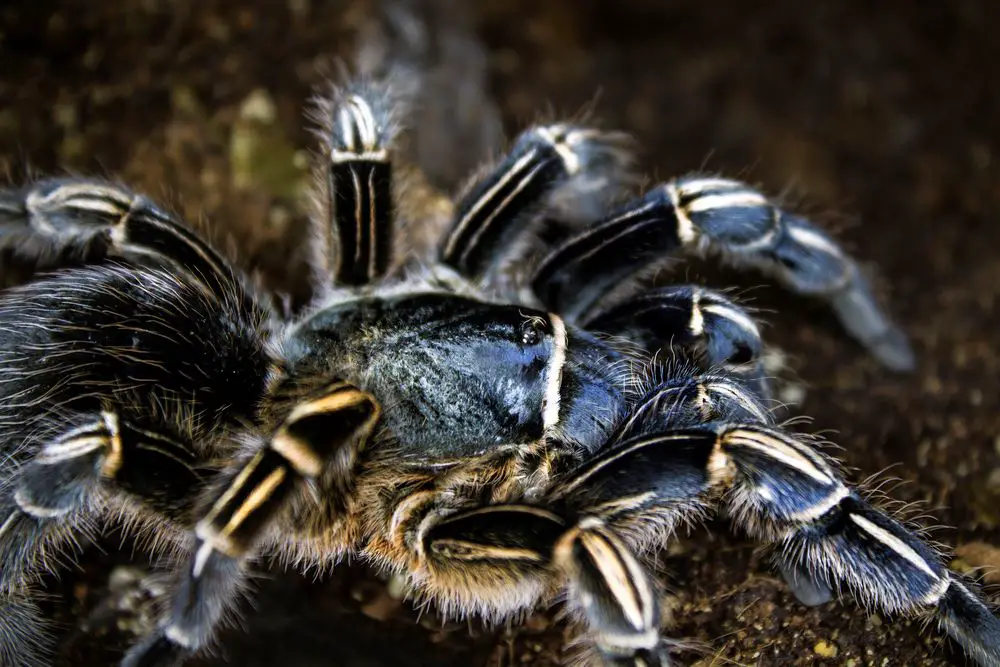
Temperature
Costa Rican Zebra can survive in extreme temperatures of up to 30 degrees Celsius in its natural habitat. However, it can escape any unbearable temperatures by burrowing deep under the soil. As a result, they are common in the tropical and coastal plains as well as the interior highland temperatures.
Suppose you want to successfully keep this spider species as a pet, you must try to maintain the ideal temperature. It is advisable to maintain a temperature range between 21 and 30 degrees Celsius.
You may not need supplementary heat unless the housing is extremely cool. If necessary, place the specially-designed artificial heating underneath at one side of the habitat.
What happens if your tarantula is too cold?
There are a few signs that can tell you that your tarantula is freezing. First, it spends most of its time in the warmer parts of the cage and in avoiding the cooler ones. Although these spider species can survive temperature fluctuations in their natural habitat, you need to provide the necessary warmth under captive care.
If your tarantula is too cold, it will experience the following:
- Loss of condition and weight
- Staying in one corner of the cage
- Low temperature “death curl”
1. Loss of Condition and Weight
Once the Costa Rican Zebra starts getting cold, it stops feeding as it stays mostly in one warm spot. As a result, it starts losing weight and its overall condition deteriorates. The situation can take a long time to get back to normal since it gets most of its fluids from the foods it eats.
2. Staying in One Corner of the Cage
If you notice that your tarantula stays in the warmest part of the cage, especially near the heat mat, it means it is getting cold. Even when you turn off the heat mat, your spider tends to stay at that particular spot. It knows that is the warmest place within the tank’s temperature gradient.
If you observe the tarantula closely, you will discover that they start exhibiting strange behaviors during this time. It may start drawing its legs close to its body to stay away from disturbance and avoid anyone picking it up. These stresses indicate that the striped knee zebra getting uncomfortably cold.
3. The Low Temperature “Death Curl”
The tarantula displays the death curl in various stages including molting and extreme cold. Therefore, you should not mistake molting curl for low temperature or desperate conditions. For example, if you see your pet in a death curl but on its back, avoid disturbing or picking it up.
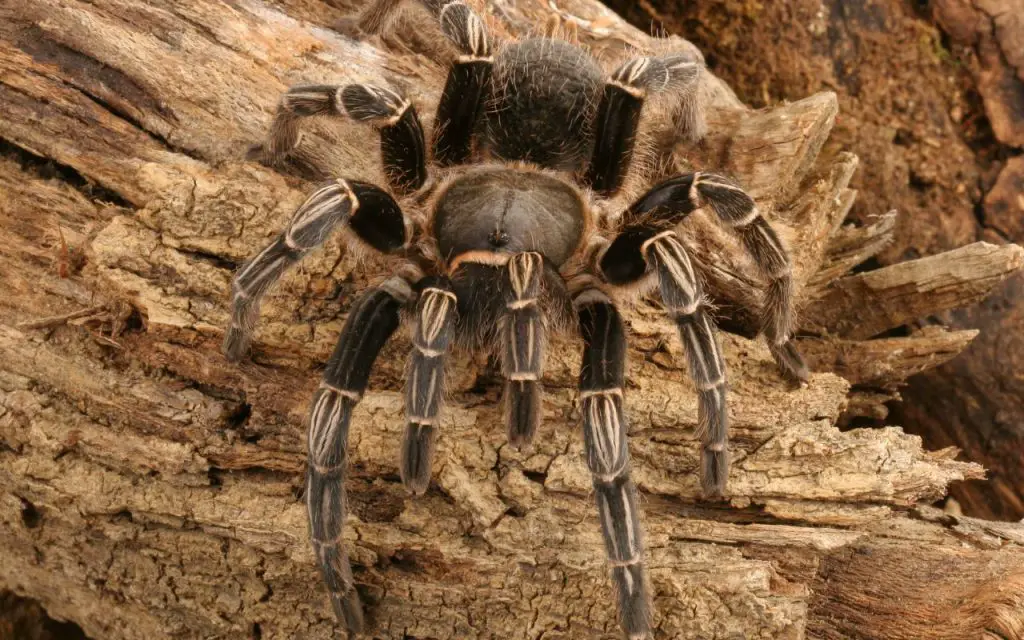
How to Adjust Temperature when Your Tarantula is too Cold
If you notice that your tarantula is too cold, you need to save the situation by safely adjusting the temperatures. Here are some safety tips:
- Use space heaters
- Use heat pads
- Cover the tank
1. Use Space Heaters
Suppose the room temperatures are falling below 60 degrees Fahrenheit, turn on your central space heater. You can also opt for a trusty space heater. These heaters gradually raise the room temperature hence heating your tarantula’s tank.
However, avoid heating the striped-knee zebra’s tank too quickly, you may stress your pet with the sudden temperature change.
2. Use a Heat Pad (risky)
If you opt for a heating pad, be sure to include a temperature gradient in the cage. That means that one side of the tank is warmer than the other and the tarantula can choose its favorable temperature. Also, ensure that the tank does not stand on the heat pad lest it heats the substrate to extreme levels.
A 5 watt heat pad stuck to the side of the tank can help – but should only ever be used with careful monitoring of humidity levels. The last thing you want is for your spider to dry out.
3. Cover the Tank
The covering is the most economical method since all you need is a thin blanket or sheet. Drape the cloth over the cage and avoid uncovering or peeping to allow the warmth to accumulate.
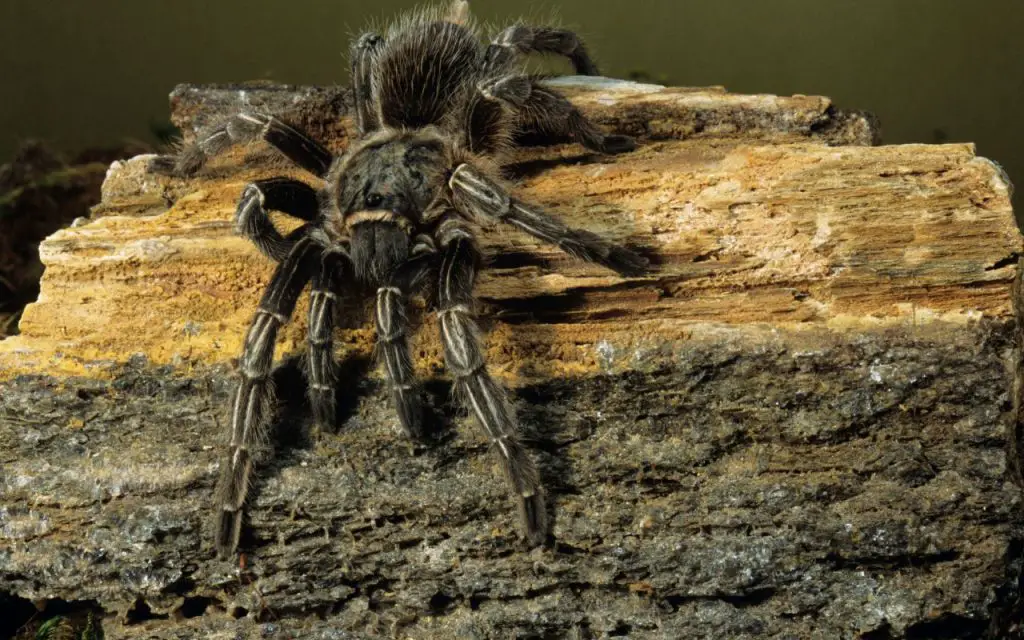
Humidity and Water
Dehydration is among the leading killers of tarantulas, making humidity essential for their survival. Humidity is also necessary during their molting process. The humidity levels in the enclosure depend on the species, but the standard range is 70 to 80%. However, the humidity level should never fall below 50% irrespective of the species.
Some desert tarantula species can survive long periods without drinking water but rather getting it from their food. On the contrary, if you keep a pet tarantula, you must put a dish with fresh water in its house.
Feeding
Tarantulas are carnivores and therefore require live food sources. The most ideal food source is gut-loaded insects like silkworms, king worms, crickets, and mealworms. They also prey on young vertebrates like pinky mice. However, many keepers do not like the latter option as it is messy.
Why is My Aphonopelma Seemanni not Eating?
Suppose your tarantula stops eating; it is probably in the premolt stage and may take some time before it can start eating again. There is no need for alarm or to try digging it out of its tunnel to make it eat. Trying to disturb the tarantula to feed may only cause unwarranted stress.
Handling
Experts advise against handling Costa Rican Zebra Tarantula due to their delicate nature as they can easily slip from your hand, fall, and maybe die. In addition, the tarantula body has urticating hairs that it kicks off in defense. The hair removal not only causes patches on the spider but also irritates if it lands on your skin.
Furthermore, if you inhale the hairs or they get into your eyes, they cause discomfort. Therefore, if you need to transfer the tarantula, it is wise to use a clear plastic container with a lid.
Does Handling Tarantulas Stress them out?
Handling tarantulas not only stresses them but also puts them in danger. Wild tarantulas live in fear of death from large predators. On the other hand, the caged tarantula feels insecure from human handling and can slide from your hand and die.
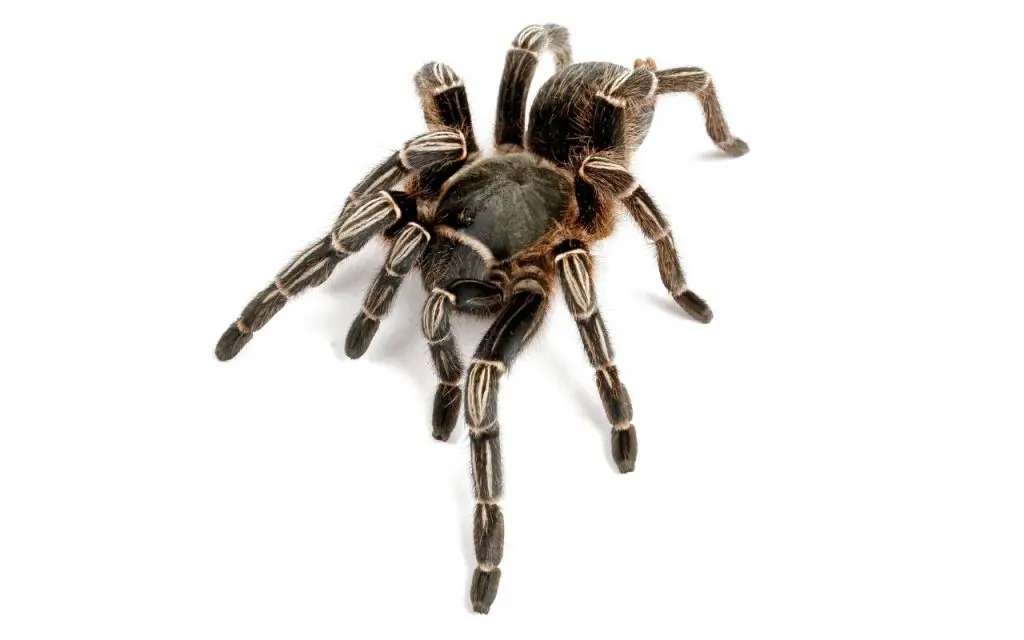
FAQ relating to Costa Rican Zebra Tarantula Care
Can You Hold a Costa Rican Tarantula?
A Costa Rican Tarantula does not necessarily appreciate handling like some pets do. Nevertheless, this gentle species does usually tolerate it without becoming aggressive. Personally, I’ve handled mine without any issues. Since they move very fast, you do have to be careful about dropping them. Holding them too high above the ground is a big risk.
How Do You Take Care of Zebra Tarantulas?
The best care for tarantulas is keeping them in a clean home with favorable conditions. The substrate must always be damp, but not muddy. Humidity should be 70 to 80% while the temperatures should remain not higher than 30 degrees Celsius. When pet tarantulas die, it’s usually from getting too dry – this is the main thing to watch out for.
How Long Do Costa Rican Tarantulas Live?
A female Costa Rican Tarantula can live up to 20 years while the male has a shorter lifespan of up to five years. The male has one year of maturity. This difference in age between the sexes is typically of all tarantulas, not just this species.

